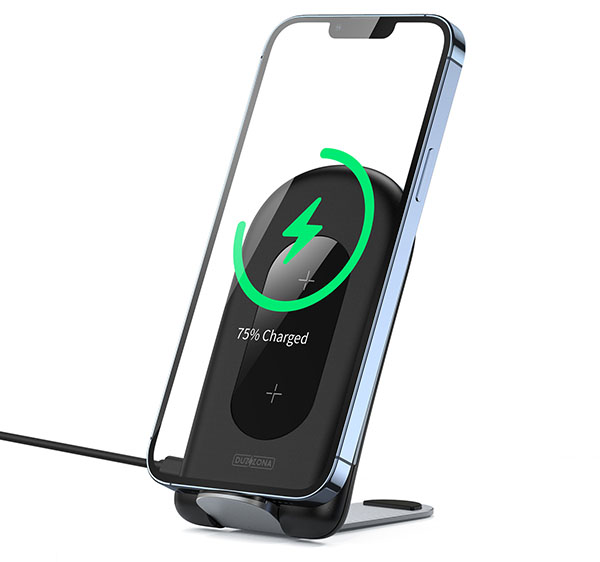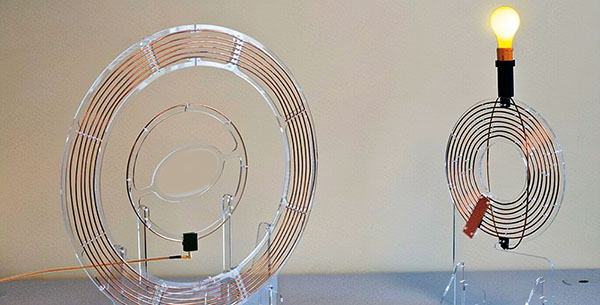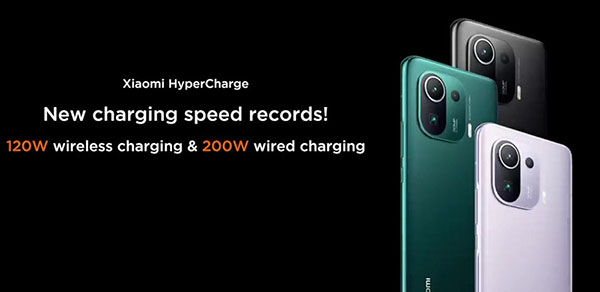The development of science and technology makes us farther and farther away from “shackles”. For all kinds of electronic products, chargers are very important accessories. When we charge mobile and portable devices, wired charging is currently the more common method, but messy charging cables can’t make us feel free in the age of convenience.
In this case, wireless charging technology is coming to market.
Wireless charging technology does not use a connector as a medium, just place the mobile phone on the wireless charging base. Compared with wired charging, wireless charging not only has multiple advantages in terms of safety, flexibility, and versatility, but also can reduce the loss of device charging interface due to frequent charging.
Wireless charging dates back to 1893, how does wireless charging work? Tesla lit a lamp through two coils at the time, using wireless charging technology. In fact, the basic principle of wireless charging today is still the same, that is, the transmitting coil generates an alternating magnetic field by inducing an alternating current, so that current is generated in the receiving coil to realize wireless power transmission.
At present, the common wireless charging technologies mainly include electromagnetic induction, electromagnetic resonance, and electric field coupling. Most of the current wireless charging of mobile phones adopts electromagnetic induction wireless power transmission technology. The transmitting coil is installed on the wireless charger, and the receiving coil is installed on the back of the mobile phone. When the mobile phone is close to the transmitting coil of the wireless charger, the magnetic field will cause the receiving coil to generate an induced current. In the whole process, the energy is converted from electrical energy into magnetic field energy, and then electricity is induced through the induction coil, and finally the charging process is completed.
As an important consumer electronics trend in the future, wireless charging has shown a trend of accelerating the transformation of technological achievements and steadily increasing mass production of products in recent years. This is especially reflected in the field of smart electronic devices such as mobile phones. With the rapid development of the smart phone industry, the “arms race” of wireless charging of mobile phones is in full swing, and various mobile phone manufacturers are pushing hard to launch new products with increasing power.
How fast is wireless charging? As early as 2014, Apple launched the Apple Watch with wireless charging; in 2015, Samsung launched a mobile phone that supports wireless charging, and successively launched a number of mobile phones and wireless chargers equipped with wireless charging chips. However, due to the low charging power of wireless chargers and the heat generation during charging, wireless charging was not popular in the initial stage.
Since 2020, wireless charging technology has developed rapidly, and major mobile phone manufacturers have launched their own wireless charging solutions. In October 2020, Apple grafted the charging method of the Apple Watch to the iPhone and launched a MagSafe magnetic wireless charger that supports 15W power. Through the attraction of magnets, this solution enables the wireless charger and the receiving coil to be accurately positioned and paired to improve charging efficiency.
Compared with Apple and Samsung, Chinese mobile phone manufacturers are running faster in the new technologies of high-power fast charging. Huawei, OPPO, Xiaomi and other brands of smartphones have already achieved 50W wireless charging, and higher-power wireless charging products continue to be launched. In July 2020, OPPO released 65W AirVOOC wireless flash charging; in October of the same year, Xiaomi showed an 80W wireless fast charging solution, and even 120W wireless charging technology is ready.
It can be seen that chip and terminal manufacturers are pushing wireless charging to higher power and faster speed. In addition to the rapid penetration of mobile phones, wireless charging is also accelerating its expansion into notebooks, smart watches, wristbands, cleaning robots, headphones and automobiles.
Wireless charging technology breaks the limitations of time and space to a certain extent, and the era of the Internet of Everything requires the blessing of wireless charging technology. It is foreseeable that wireless charging technology will have very broad application prospects in the future.
At the critical moment when major manufacturers are preparing to make a big effort in wireless charging power, the Chinese Ministry of Industry and Information Technology officially took action and began to strictly control wireless charging power. It plans to stipulate the rated transmission power of all mobile and portable wireless charging equipment produced, sold and used in China must less than 50W to avoid mutual interference between wireless devices.
So, for the charging of consumer electronic devices represented by mobile phones, can 50W wireless charging technology meet the needs of consumers?
In fact, 50W is already a high wireless charging power level. In the 50W wireless charging technology released by Xiaomi in 2020, the 4500mAh battery can be charged to 100% in 40 minutes, which exceeds some wired charging. After all, the current wired charger power of Apple mobile phone only reaches 20W, and the magnetic wireless charging is only 15W. For consumers, the 50W wireless charging power is enough to meet the demand for fast charging of mobile phones.

